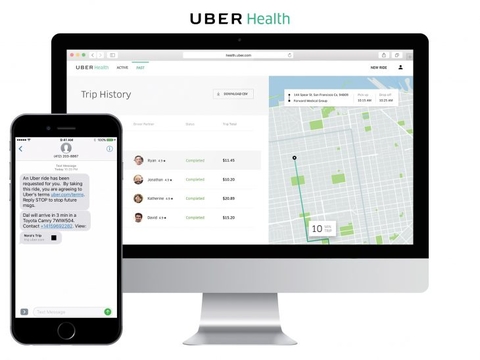Efforts by ride-hailing companies to help reduce patient no-shows have so far met with little success. That hasn’t stopped Uber and Lyft from continued efforts to crack the healthcare market, though. Uber’s latest attempt comes in the form of a dashboard that providers can use to set up rides for patients, caregivers and staff.

The Uber Health dashboard will be HIPAA-compliant, according to an Uber announcement.
"We have been working hard to develop, implement and customize numerous safeguards," the company said, adding it's working with a HIPAA compliance company to conduct comprehensive risk and compliance assessments and will sign Business Associate Agreements with healthcare partners.
Nationwide, hospitals, health systems and physician practices deal with millions of no-show patients every year.
RELATED: 4 ways to cut down on no-show patients at your practice
The consequences are wide-ranging. When patients don't show up, it hurts revenue, messes up schedules and physician workflow, and impacts access not only for the patients who miss their appointments but also for patients who could have taken that slot.
The size of the opportunity has so piqued Uber’s interest that the company has deployed low-tech solutions in its pilot programs. Both Uber and its primary competitor, Lyft, have previously undertaken partnerships aimed at capturing the patient transportation market and helping to improve access to care.
In some non-emergency cases, a ride-hailing service could help avoid a costly ambulance ride.
RELATED: Blue Cross Blue Shield teams up with Lyft to improve patients' access to healthcare
It sounds like a good idea, but so far such programs haven't panned out.
A recent JAMA study that looked at Medicaid patients in Philadelphia, for example, found that only about 1 in 4 patients with access to free rides to their appointments actually took advantage of the service. The rate of missed appointments among those who were offered free rides was about the same as the number missed by patients who did not receive the offer.
Uber Health uses text messages, an online platform and landline phone calls to coordinate rides, so patients don't need an app or a smartphone to use the service. And rides can be arranged up to 30 days in advance, which means transportation could be scheduled for follow-up appointments while the patient is still at the healthcare facility.
In addition to scheduling rides on the dashboard, providers can also use it to track monthly billing statements and appointments and to produce scheduling reports, the company said.